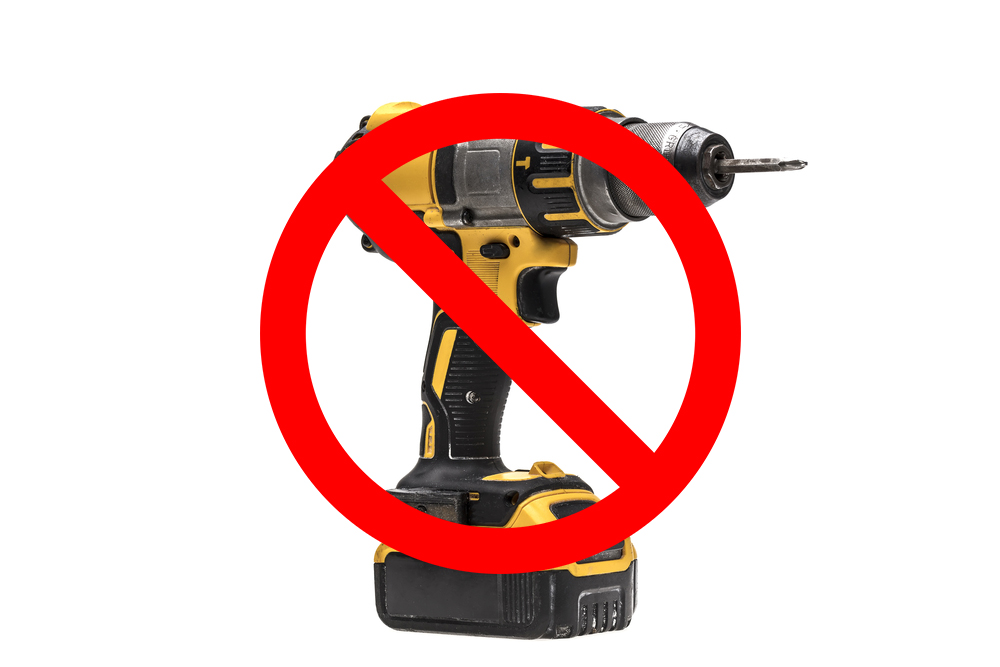As technology continues to grow and products evolve, we all look for ways to increase productivity and streamline the workflow, tools and fasteners are no exception. However, as lithium ion cordless tools and cordless impact tools become cheaper and stronger, some people believe these tools will increase productivity and make the job quicker and easier. Although these tools are very versatile, they are not designed for self-drilling screws. Every metal building screw manufacturer recommends 2000 RPMs or less on self-drilling screws and 900 RPMs or less for stainless steel fasteners. Here, we’ll discuss the risks of using an impact tool in place of a screw gun and the benefits of proper installation.
Screw Gun vs. Cordless Drill
For most metal building projects, a screw gun, or “tek” gun with an adjustable clutch and a depth sensing nosepiece is recommended. Although it is slower, it will increase productivity and costly problems. By using a faster and stronger tool, like the cordless impact tool, you are introducing stress to the fastener. Adding stress to the fastener can be dangerous, therefore proper installation is paramount.
Cordless impact tools have a “ratcheting” action designed to torque down a fastener. Many times this “ratcheting” action over-torques the screw and compromises the torsional strength, causing an immediate failure or a premature failure of the fastener. The head of the screw will typically twist off. Aside from the frustration of removing the headless screw, the substrate the fastener was installed in has also been compromised. Cordless drills (and, in many cases, corded drills) are normally 4000 to 6000 RPM. Spinning this fast does not allow the drill tip on the screw to properly drill the panel or substrate. When attempting to install a self-drilling screw at this rate, you find yourself “burning the tip.” These types of mistakes can cost you time and money, which is why it is extremely important that you use a screw gun as opposed to a cordless drill.
Impact Tools and Paint Chipping
Another common issue when using impact tools instead of screw guns is paint chipping. Paint and powder coatings will hold up when correct tools are used, but problems can arise when corners are cut. As mentioned earlier, the “ratcheting” action of the impact gun can chip the coating, but the nutsetter in the tool is most often the culprit. As a drill screw penetrates a panel, it creates metal shavings. Those metal shavings many times are captured in the magnet of the magnetic nutsetter, thus when the screw head is inserted into the nutsetter, chipping happens. The best remedy to this scenario is to either clean or replace the nutsetter. Cleaning the nutsetter is as easy as taking a small piece of mastic tape and inserting it into the nutsetter to remove the shavings. Replacement may be necessary is the lobes are worn.
Bottom Line
Though impact tools may seem like the best tool for the trade, they can cause screw failure, chip paint, and many other problems. Using the proper installation tools, like a screw gun or “tek” gun, will save you time, money, and a lot of frustration on your metal building project.
